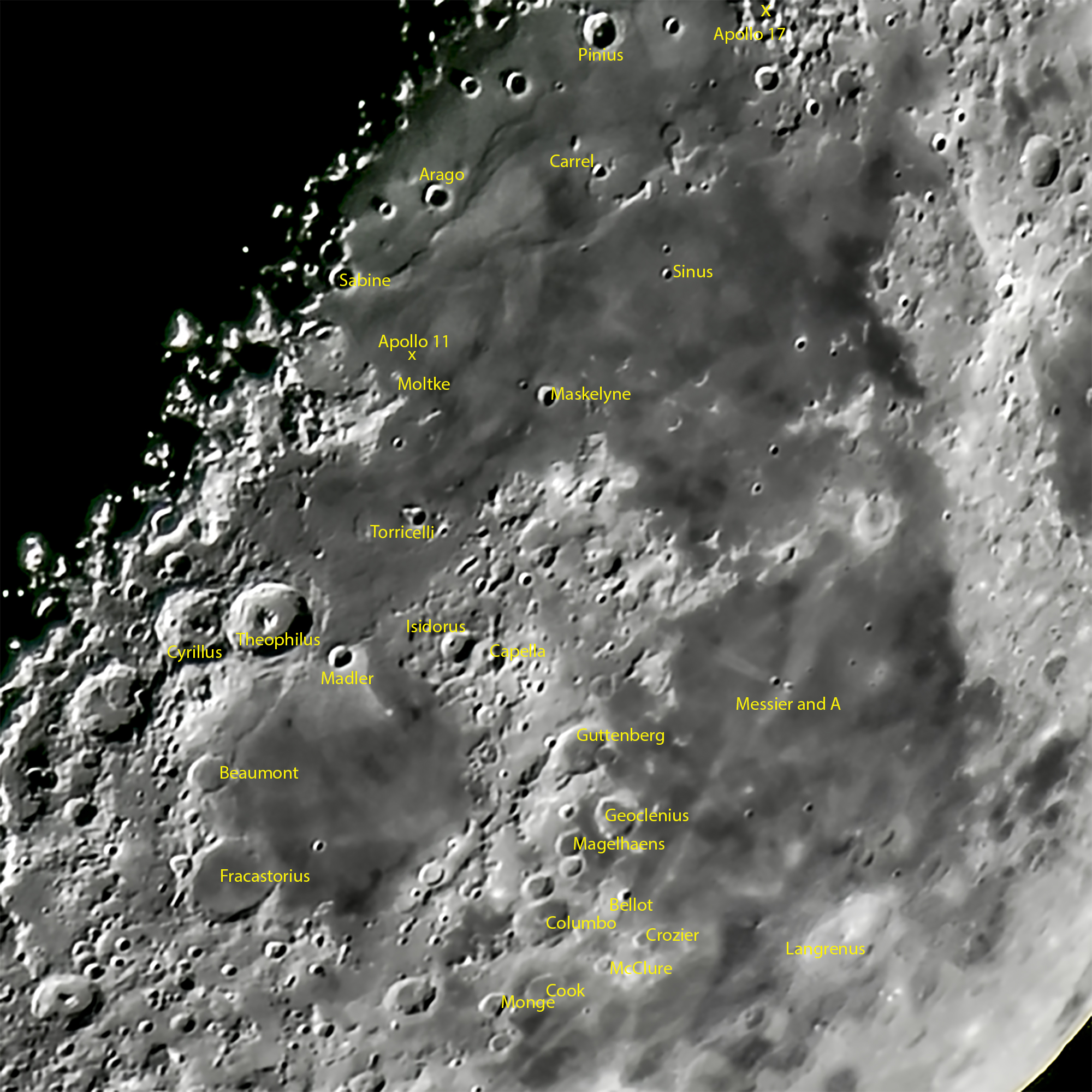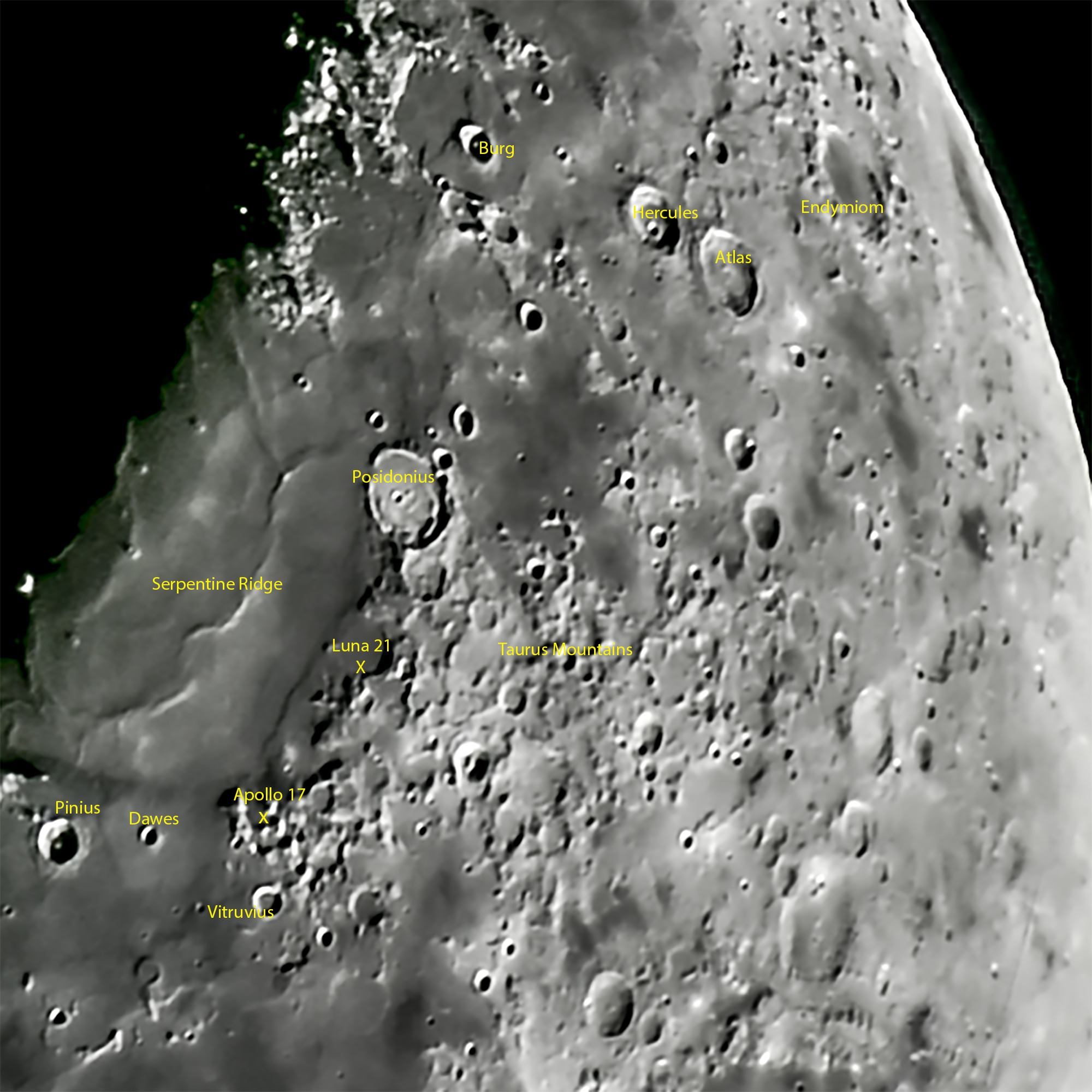For my last post, 2024’s first crescent moon, one can no doubt discern that it was just a cell phone shot I made while on my evening walk, so apologies for its lower quality. In order to give you a closeup view I waited three nights until January 16 for the crescent to grow from 6% to 31%, just a day before the first quarter. This time I used a telephoto lens and a pro camera to get a lot more detail. [see the above photo]
Then I enlarged that image to get even more detail in order to identify the first and last Apollo landing sites as well as the names of some of the numerous craters. One of which is the large complex Theophilus on the lower left. It is over 60 miles in diameter with a rim as tall as Mt Whitney.
Look opposite of it on the lower right for the much smaller Messier crater and its companion A. As compared to Theophilus, a direct impact crater, Messier was formed by a grazing smaller projectile coming from the east. The asteroid ricocheted and formed a second crater, A, then created a debris trail toward the west. The many unblemished lunar features all have a story to tell.

The enlargement below overlaps the first one and gives another view of the Apollo 17 landing site. As many will remember Apollo 11 (Armstrong, Aldrin, and Collins) was the first crewed lunar landing on July 20, 1969.Then came 12, 14, 15, 16, and 17 with the near-disaster Apollo 13, which failed to land. Apollo 17 (Cernan, Schmitt, and Evans) landed in the Taurus-Littrow Valley, near the edge of the Taurus Mountains, surrounded by three large massifs and deeper than the Grand Canyon. As you can imagine from my photo, what brave men they were!
From Wikipedia: The mission broke several records for crewed spaceflight, including the longest crewed lunar landing mission (12 days, 14 hours), greatest distance from a spacecraft during an extravehicular activity of any type (4.7 miles), longest total duration of lunar-surface extravehicular activities (22 hours), largest lunar-sample return (254 lb), longest time in lunar orbit (6 days, 4 hours), and greatest number of lunar orbits (75).
Note the Serpentine Ridge just west of the large crater Posidonius and is over 200 miles long.

Here’s Astronaut Harrison Schmitt working next to Tracy’s Rock in the Taurus–Littrow valley — what an adventure that must have been! So, next time you look at the little crescent moon, try to remember all the good things that happened up there.









Very nice!
Superb, thank you!